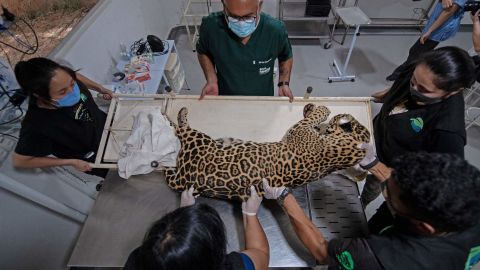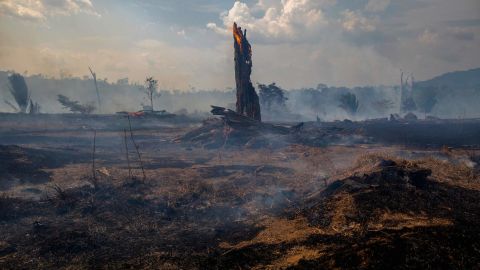CNN
—
The world’s wildlife populations plummeted by an average of 69% between 1970 and 2018, a dangerous decline resulting from climate change and other human activity, the World Wide Fund for Nature (WWF) warned in a report Thursday.
WWF tracked global changes in the abundance of wildlife across land, air and water of nearly 32,000 populations of 5,230 vertebrate species between 1970 and 2018. It used a dataset known as the Living Planet Index (LPI), which it has collated with the Zoological Society of London (ZSL) since 1998 and updates every two years.
Written by 89 authors, the report highlights the planet’s “double emergency” of climate and loss of biodiversity, the driving forces stemming directly from the degradation of land and sea systems, overexploitation of animals and plants, and climate change.
Latin America and the Caribbean show the greatest regional decline in average population at 94%, with the report warning that the Amazon rainforest is nearing the point of being nonfunctional.
Andrew Terry, director of conservation and policy at ZSL, said in a statement that the index “highlights how we have cut away the very foundation of life … (and that) preventing further biodiversity loss and restoring vital ecosystems has to be at the top of global agendas to tackle the mounting climate, environmental and public health crises.”
Currently, 1 million plants and animals face extinction, with 1%-2.5% of mammals, birds, reptiles, fish and amphibians having already gone extinct, the WWF reported.
But the numbers don’t mean that 69% of animals have been wiped off the planet since 1970. WWF International Director General Marco Lambertini told CNN that the LPI works out the decline of a particular species population as a percentage and then averages out all the percentages to come up with the headline figure.
“Normally, when people think of endangered wildlife, it’s all the iconic animals such as elephants, tigers and pandas,” Lambertini told CNN. “Funnily enough, some of these animals have started to bounce back. Tigers are almost double their number and pandas have gone up about 20%.”
Lesser-known animals are often the ones in decline. The Amazon pink river dolphin in the Mamirauá Sustainable Development Reserve in the Brazilian state of Amazonas, for example, saw a population decline of 65% between 1994 and 2016, the report found. The eastern lowland gorilla population in the Democratic Republic of Congo’s Kahuzi-Biega National Park fell by 80% between 1994 and 2019, while the Australian sea lion lost 64% of its population between 1977 and 2019.
The index is based on pre-existing, published research on wild animals, which means there is a bias on which animals make the LPI and which don’t. All the animals included are vertebrates – animals with spines – even though invertebrates, or spineless animals, outnumber them. Invertebrates are not included because it is more difficult to conduct research on them, Lambertini told CNN.
In 30 years of intervention to halt biodiversity loss, the LPI continues to observe declines, which, the WWF says, act as early warning indicators of ecosystem health. The report emphasized the importance of urgent action by governments, corporations and the public.

The planet has warmed by 1.2 degrees Celsius since pre-industrial times, which is one of the reasons freshwater species showed the greatest overall decline, at 83%. In 2021, ocean temperatures were the hottest on record for the third year in a row. A loss of habitat and barriers to migration routes – for example, dams – are responsible for approximately half of threats faced by fish.
While the report finds the natural world near a tipping point, it also reiterates that immediate transformative action can slow and even reverse these devastating results.
The COP15 meeting of the United Nations Convention on Biological Diversity is expected to take place in Montreal in December. Lambertini believes this will be an opportunity for leaders to set the direction for the world in providing solutions to stop or “bounce back” on the loss of biodiversity.

“It’s a famous saying, ‘you can’t manage what you can’t measure,’” so a manageable goal is needed. Climate, for example, needs to hit net zero carbon emissions, but net zero loss of biodiversity is not good enough,” he said, because of the amount of loss incurred over a short period of time.
Instead, he reasons that the global goal should be “net positive” on biodiversity, because nature can come back, and is coming back for some species.
Under discussion is a global framework to double the protection and conservation of nature by 2030. Currently, 15% of land is conserved, and 8% of the oceans, he said.
On a smaller scale, he said the public can do their bit by following a simple rule: “Consume less, and more sustainably” in a bid to reduce the pressure on nature.